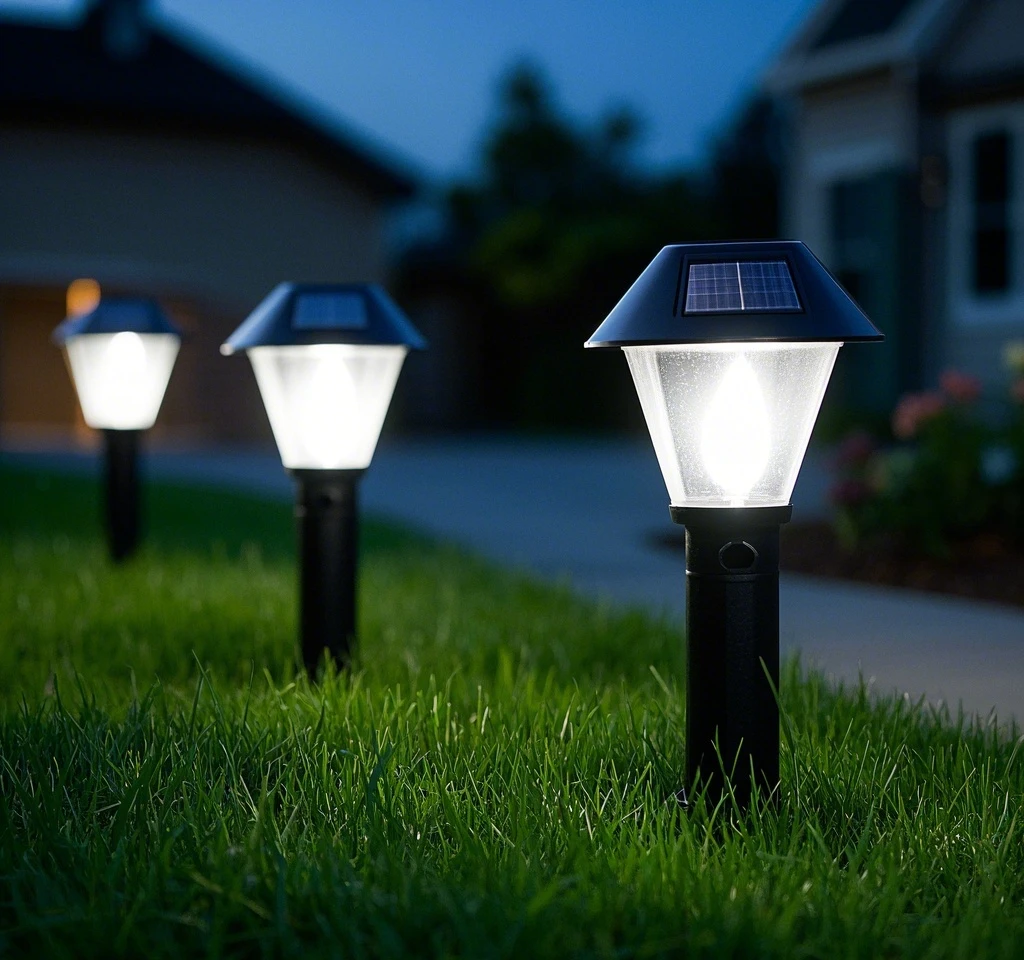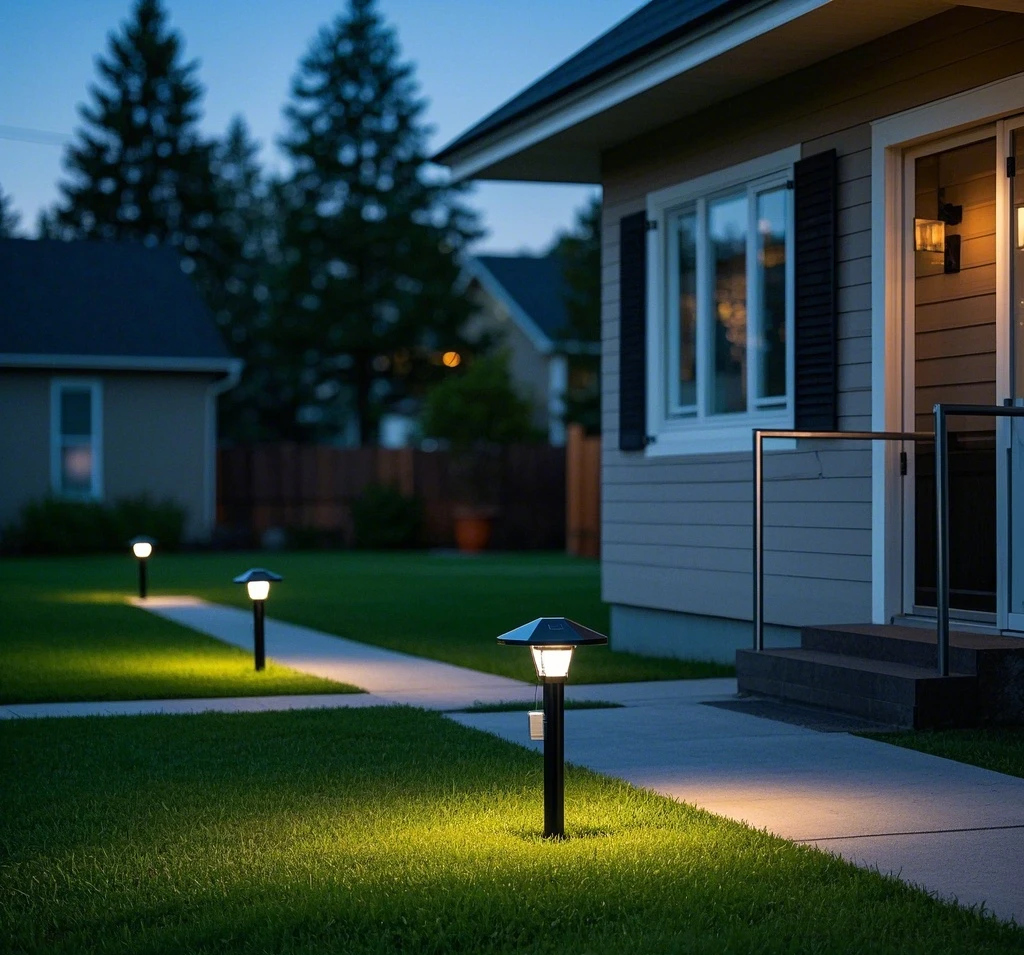Nighttime lighting does more than illuminate spaces; it shapes how we feel and behave in the dark. Well-designed lighting fosters a sense of security, reduces anxiety, and promotes emotional comfort. Poorly planned lighting, however, can create unease, amplify shadows, or compromise privacy. By leveraging the principles of psychology, path and area lighting can serve as dual tools for enhancing safety first and emotional well-being. This article explores how thoughtful lighting design, including solar path lighting and area illumination, creates safer and more comforting nighttime environments.

Safety Considerations in Lighting Design
Effective lighting prioritizes safety first by addressing key technical elements that enhance visibility and deter threats. Below are the critical safety points to consider:
Light Intensity
Adequate light intensity ensures clear visibility without overwhelming the senses. For pathways, a range of 10-20 lumens per fixture is typically sufficient for solar path lighting, providing enough brightness to guide footsteps while minimizing glare control. For larger areas like driveways or yards, 50-100 lumens per fixture offers robust illumination without creating harsh contrasts.
Shadow Control
Shadows can obscure hazards or create unsettling visual effects. Strategic placement of lights, such as staggered solar path lighting along walkways, minimizes shadow pockets. Using diffused or frosted lenses further softens light distribution, reducing stark contrasts that can heighten anxiety.
Contour Lighting
Highlighting the contours of paths, steps, or obstacles is critical for safe navigation. Low-level solar path lighting with wide beam angles (e.g., 120 degrees) ensures that edges are clearly defined, reducing the risk of trips or falls. For example, bollard-style lights can outline a pathway’s perimeter effectively.
Reflection Angles
Reflective surfaces like wet pavement or glass can amplify glare, disorienting users. Glare control is achieved by angling lights downward and using shielded fixtures to direct light precisely where needed. This approach enhances visibility while maintaining a privacy-friendly lighting environment by limiting light spill into neighboring spaces.
Balancing Emotional Comfort and Privacy
Lighting design must balance safety with emotional comfort and privacy. Harsh, overly bright lights can make spaces feel sterile or exposed, while dim, warm lighting fosters a sense of calm and security. Privacy-friendly lighting avoids illuminating private areas like windows or patios, preserving personal boundaries.
- Warm vs. Cool Light: Warm light (2700-3000K) creates a cozy, inviting atmosphere, ideal for residential settings. Cooler light (4000K) is better suited for high-traffic areas requiring alertness, such as driveways.
- Motion-Activated Lighting: Motion-activated systems provide a sense of control, illuminating spaces only when needed. This reduces energy waste and minimizes light intrusion into private areas, enhancing both comfort and privacy.
- Layered Lighting: Combining ambient, task, and accent lighting creates a balanced environment. For instance, soft path lights paired with focused porch lighting ensure safety without sacrificing a welcoming vibe.
Psychologically, consistent and predictable lighting reduces stress by signaling a controlled environment. Privacy-friendly lighting respects personal space, fostering a sense of ownership and calm.
Scenario-Based Lighting Recommendations
Different outdoor spaces require tailored lighting approaches to maximize safety and emotional impact. Below is a curated list of recommendations:

Pathways
- Key Features: Use solar path lighting with 10-20 lumens, spaced 6-8 feet apart, to ensure even illumination. Opt for low-glare, downward-facing fixtures to maintain glare control.
- Psychological Benefit: Clear, consistent lighting reduces anxiety by guiding users confidently along the path.
- Example: Bollard or stake lights with frosted lenses for soft, even light distribution.
Fences
- Key Features: Install subtle accent lighting along fences to define boundaries without overwhelming brightness. Low-voltage or solar path lighting with 5-10 lumens works well.
- Psychological Benefit: Enhances territoriality, making the space feel secure and defined.
- Example: String lights or recessed LEDs along fence lines for a gentle glow.
Porches
- Key Features: Use motion-activated wall sconces or overhead lights (50-100 lumens) to illuminate entry points. Ensure glare control with shielded fixtures to avoid blinding visitors.
- Psychological Benefit: Bright, welcoming light at entryways signals safety and hospitality.
- Example: A warm-toned, motion-sensor porch light with a 90-degree beam angle.
Backyard Workspaces
- Key Features: Combine task lighting (100-200 lumens) with ambient solar path lighting to create a functional yet relaxing environment. Motion-activated spotlights can enhance security during use.
- Psychological Benefit: Balanced lighting supports productivity while maintaining a calming atmosphere.
- Example: Adjustable LED spotlights for work areas paired with soft path lights for surrounding areas.
Emergency Lighting and Equipment Reliability
In emergencies, reliable lighting is critical for safe navigation and quick response. Motion-activated emergency lights with battery backups ensure functionality during power outages. For solar path lighting, choose models with high-capacity batteries (e.g., 2000mAh) and weather-resistant ratings (IP65 or higher) to withstand harsh conditions.
- Backup Power: Solar lights with integrated batteries provide 6-8 hours of illumination after a full charge, ensuring reliability.
- Durability: Select fixtures made from corrosion-resistant materials like stainless steel or UV-resistant plastic to maintain performance over time.
- Redundancy: Install overlapping lighting zones to ensure no single point of failure compromises safety.
Regular maintenance, such as cleaning solar panels and checking battery health, extends equipment lifespan and ensures consistent performance.
Testing and Evaluation Methods
To ensure lighting meets safety and emotional goals, systematic testing is essential:
- Illumination Mapping: Use a light meter to measure lumens and ensure even coverage across paths and areas. Target 1-2 foot-candles for pathways and 5-10 foot-candles for high-traffic zones.
- User Feedback: Conduct surveys or observe user behavior to assess comfort levels and identify areas of unease.
- Shadow Analysis: Walk the space at night to identify shadow pockets or glare issues, adjusting fixture placement as needed.
- Reliability Testing: Simulate power outages or adverse weather to verify emergency lighting performance.
Iterative testing ensures that lighting remains effective as environmental conditions or user needs change.
Case Studies and Cost Analysis
Case Study 1: Suburban Home Pathway
A homeowner installed solar path lighting along a 50-foot walkway using 12 bollard-style lights (15 lumens each, $20 per unit). The motion-activated porch light ($50) enhanced entryway security. Total cost: $290. Outcome: Improved navigation and a 30% reduction in reported nighttime anxiety among residents.
Case Study 2: Urban Backyard Workspace
A small business owner set up a backyard office with motion-activated LED spotlights ($100 for two) and solar path lighting for ambiance ($150 for 10 units). Total cost: $250. Outcome: Increased productivity and a welcoming environment for evening client meetings.
Cost Considerations
- Solar path lighting: $10-30 per unit, with no ongoing energy costs.
- Motion-activated lights: $30-100 per unit, depending on features like battery backup.
- Installation: DIY for solar options reduces labor costs; professional installation for wired systems ranges from $200-500.
- Maintenance: Annual battery replacement or cleaning costs approximately $50-100.
By prioritizing safety first and integrating privacy-friendly lighting, these solutions deliver both functional and emotional benefits at a reasonable cost.
Conclusion
Path and area lighting, when designed with psychological principles in mind, serves as a powerful tool for enhancing nighttime safety and emotional well-being. By addressing light intensity, shadow control, and glare control, and incorporating motion-activated and solar path lighting solutions, homeowners can create secure, comforting environments. Tailored designs for pathways, fences, porches, and workspaces ensure both practicality and emotional resonance, while reliable emergency systems provide peace of mind. Through careful planning, testing, and cost-effective choices, lighting can transform nighttime spaces into safe, inviting havens.

Comments